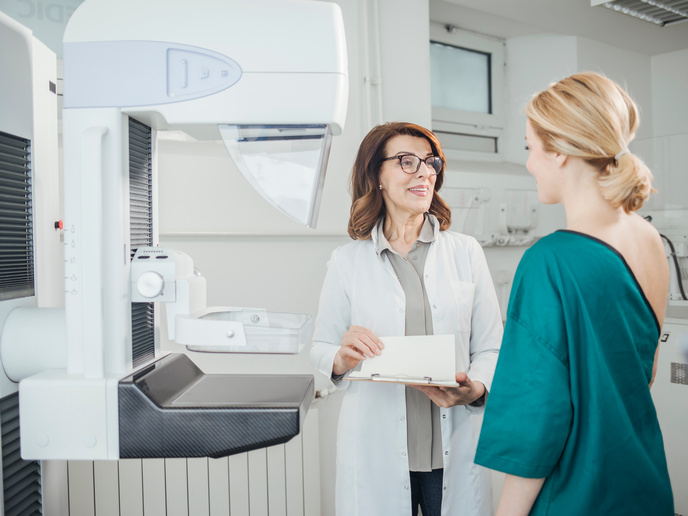Real-time cancer diagnosis with a molecular test at the tip of a probe
Breast cancer can be classified into several different types based on the characteristics of the cancer cells and whether they are hormone receptor-positive or negative. Hormone receptor-positive breast tumours contain either oestrogen or progesterone receptors or both and tend to have a slower growth rate compared to hormone receptor-negative cancers. In 20 % of breast cancer cases, there is overexpression of the human epidermal growth factor receptor 2 (HER2). HER2-positive breast cancers tend to be more aggressive than other types of breast cancer. Nonetheless, there are drugs that specifically target the HER2 protein and can be used in combination with other treatments, such as chemotherapy and radiation therapy. Therefore, there is a need for accurate HER2 expression estimation to predict if patients will benefit from targeted therapies.
Probe-based technology for in vivo biomarker detection
HER2 expression is conventionally estimated using immunohistochemistry, a laborious technique performed on breast cancer tissue from biopsy. However, there are concerns with the variability of immunohistochemistry performance and interpretation, particularly with false-positive results from overstaining or false-negative from unrepresentative biopsy. To overcome these challenges, the EU-funded SDS-OmiProbe project developed a breakthrough device that can measure HER2 and other cancer biomarkers in vivo. The device consists of a nano-size glass probe that contains a fibre optic biosensor dedicated for biomarker sensing. The probe is placed inside a very thin biopsy needle and connected with an optical analyser. The latter employs software and algorithms to convert the optical signal into a meaningful diagnostic result that corresponds to the tumour’s HER2 status. “The inPROBE device enables fast in vivo breast cancer diagnosis based on numerical data with no room for false interpretations,” explains project coordinator and CSO of SDS Optic Magdalena Staniszewska.
Improved diagnostic performance
The inPROBE device involves a minimally invasive procedure, shortening time for diagnosis and generating objective results. The thickness of the probe makes it safer to use, much less stressful and much less painful for patients. Importantly, it allows instant measuring of HER-positive cells at single-cell resolution, shortening biomarker testing and waiting times from several days or weeks to minutes. “Our technology will not only reduce diagnosis time, but it will offer in vivo examination and objective results without the need for tissue biopsy,” emphasises Staniszewska. The SDS-OmiProbe solution offers increased diagnostic precision, assisting the administration of innovative cancer treatments. It can be employed to monitor therapies in real time and in a natural state, thus giving medical professionals a previously unavailable fast and efficient tool.
Device clinical testing and future prospects
The inPROBE diagnostic device currently undergoes clinical testing to compare the performance with the standard methods in determining HER2 status. The first part of the study on patients with known HER2 diagnosis based on biopsy results have shown no adverse effects related to the inPROBE device. Future plans involve the rigorous efficacy and safety testing on a larger cohort of patients before the device gets regulatory approval for market release. The SDS-OmiProbe project helped the team set up a technology platform for the manufacturing of the biological components of the inPROBE device. Staniszewska envisages using this platform to advance inPROBE technology and sensor functionalisation for “the assessment of cancer biomarkers relevant to other types of cancer such as prostate cancer.”
Keywords
SDS-OmiProbe, HER2, breast cancer, diagnosis, inPROBE device, biomarker, fibre optic biosensor







